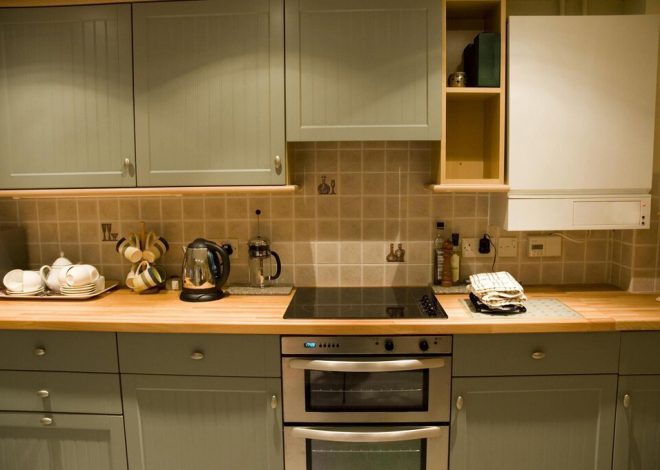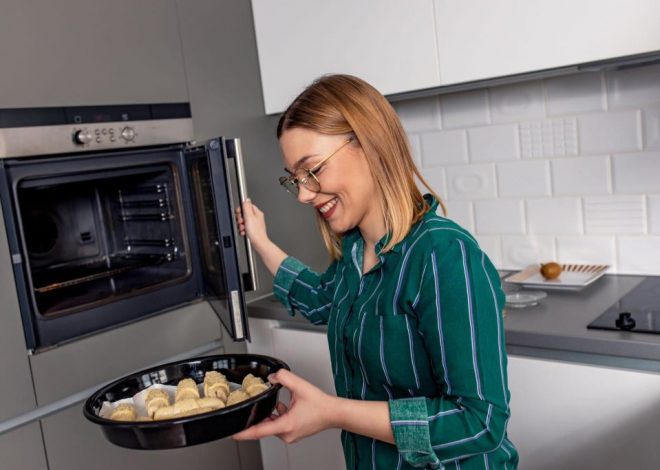
Sustainable Kitchen Evolution: Energy-Efficient Cooking in Tiny Homes
In recent years, the tiny home movement has gained significant traction as people seek more sustainable and minimalist lifestyles. These compact dwellings offer a host of benefits, including reduced environmental footprint, lower costs, and simplified living.
However, one challenge tiny homeowners face is optimizing their kitchen space for energy-efficient cooking. In this article, we explore innovative solutions and strategies for sustainable kitchen evolution in tiny homes.
Understanding Energy Efficiency in Tiny Homes
Understanding energy efficiency in the context of tiny homes is essential for optimizing resource usage and minimizing environmental impact. Tiny homes, characterized by their compact size and minimalist design, present unique challenges and opportunities in terms of energy efficiency. With limited space and resources, every aspect of energy consumption must be carefully considered to ensure sustainable living practices.
The Importance of Energy Efficiency
Energy efficiency is crucial in tiny homes, where space and resources are limited. Maximizing energy efficiency not only reduces environmental impact but also lowers utility bills and enhances overall comfort. In the kitchen, where appliances consume a significant amount of energy, adopting sustainable practices is especially vital.
- Space and Resource Limitations: Energy efficiency is paramount in tiny homes due to limited space and resources.
- Environmental Impact and Cost Reduction: Maximizing energy efficiency reduces environmental impact and lowers utility costs.
- Significance in Tiny Kitchens: In tiny kitchens, where appliances consume a significant amount of energy, sustainable practices are especially vital.
- Enhanced Comfort and Sustainable Lifestyle: Efficient energy usage enhances overall comfort and supports a sustainable lifestyle in tiny homes.
- Reduced Reliance on Fossil Fuels: Prioritizing energy efficiency helps minimize reliance on fossil fuels and reduces carbon emissions.
Challenges in Tiny Home Kitchens
Tiny kitchens present unique challenges when it comes to energy-efficient cooking. Limited space restricts the size and number of appliances that can be installed, while off-grid living may necessitate alternative energy sources such as solar or propane. Additionally, effective ventilation is essential to maintain indoor air quality in tightly sealed tiny homes.

Strategies for Energy-Efficient Cooking
Strategies for energy-efficient cooking in tiny homes encompass a range of innovative approaches aimed at minimizing resource consumption while maximizing functionality. One key tactic involves the selection of compact and multi-functional appliances. In the confined spaces of small kitchens, each appliance must serve multiple purposes to optimize efficiency without compromising on usability.
Compact and Multi-functional Appliances
In tiny kitchens, every inch of space matters. Opting for compact, multi-functional appliances can maximize efficiency without sacrificing functionality. For instance, combination microwave-convection ovens can perform the tasks of both a microwave and a traditional oven, reducing energy consumption and freeing up valuable counter space.
Induction Cooktops
Induction cooktops are highly energy-efficient alternatives to traditional gas or electric stoves. By utilizing electromagnetic technology, induction cooktops heat cookware directly, minimizing heat loss and cooking food faster. Additionally, they are safer and easier to clean than conventional stoves, making them ideal for tiny home kitchens.
Efficient Ventilation Systems
Proper ventilation is essential in tiny kitchens to remove cooking odors, excess moisture, and indoor air pollutants. Energy-efficient ventilation systems, such as range hoods with built-in fans and filters, help maintain a healthy indoor environment while minimizing energy loss.
Installing operable windows or skylights can also facilitate natural ventilation and reduce the need for mechanical systems.

Smart Energy Management
Integrating smart technology into the kitchen can enhance energy efficiency and convenience in tiny homes. Smart thermostats, lighting controls, and appliance monitors enable homeowners to optimize energy usage and track consumption patterns.
By automating energy-saving behaviors, such as adjusting temperatures and scheduling appliance usage, tiny homeowners can further reduce their environmental footprint.
The Future of Sustainable Kitchen Design
As the demand for tiny homes continues to grow, so too will the need for innovative solutions in sustainable kitchen design. Emerging technologies, such as energy-efficient appliances, advanced insulation materials, and renewable energy systems, offer promising opportunities to enhance efficiency and comfort in tiny home kitchens.
- Innovative Technologies: Advancements in technology will continue to drive sustainable kitchen design forward. From energy-efficient appliances to smart home integration, future kitchens will leverage cutting-edge innovations to optimize resource usage.
- Integration of Renewable Energy: The integration of renewable energy sources, such as solar panels and wind turbines, will become more prevalent in kitchen design. Off-grid tiny homes will increasingly rely on renewable energy to power appliances and reduce reliance on traditional energy sources.
- Material Innovations: Sustainable and eco-friendly materials will play a significant role in future kitchen design. From countertops made of recycled materials to cabinets constructed from sustainable wood, designers will prioritize environmentally friendly options to reduce the carbon footprint of kitchen construction.
- Modular and Flexible Designs: Modular and flexible designs will enable homeowners to adapt their kitchen spaces to changing needs and lifestyles. Versatile layouts and movable components will maximize efficiency and functionality, allowing for efficient use of space in tiny homes.
- Emphasis on Circular Economy: The concept of a circular economy, where resources are reused, recycled, and repurposed, will shape the future of kitchen design. From composting systems to water-saving fixtures, kitchens will be designed with sustainability and longevity in mind, minimizing waste and maximizing efficiency.

Conclusion
Energy-efficient cooking is essential for sustainable living in tiny homes. By implementing compact appliances, induction cooktops, solar-powered systems, efficient ventilation, and smart energy management strategies, homeowners can minimize their environmental impact while enjoying the benefits of minimalist living.



